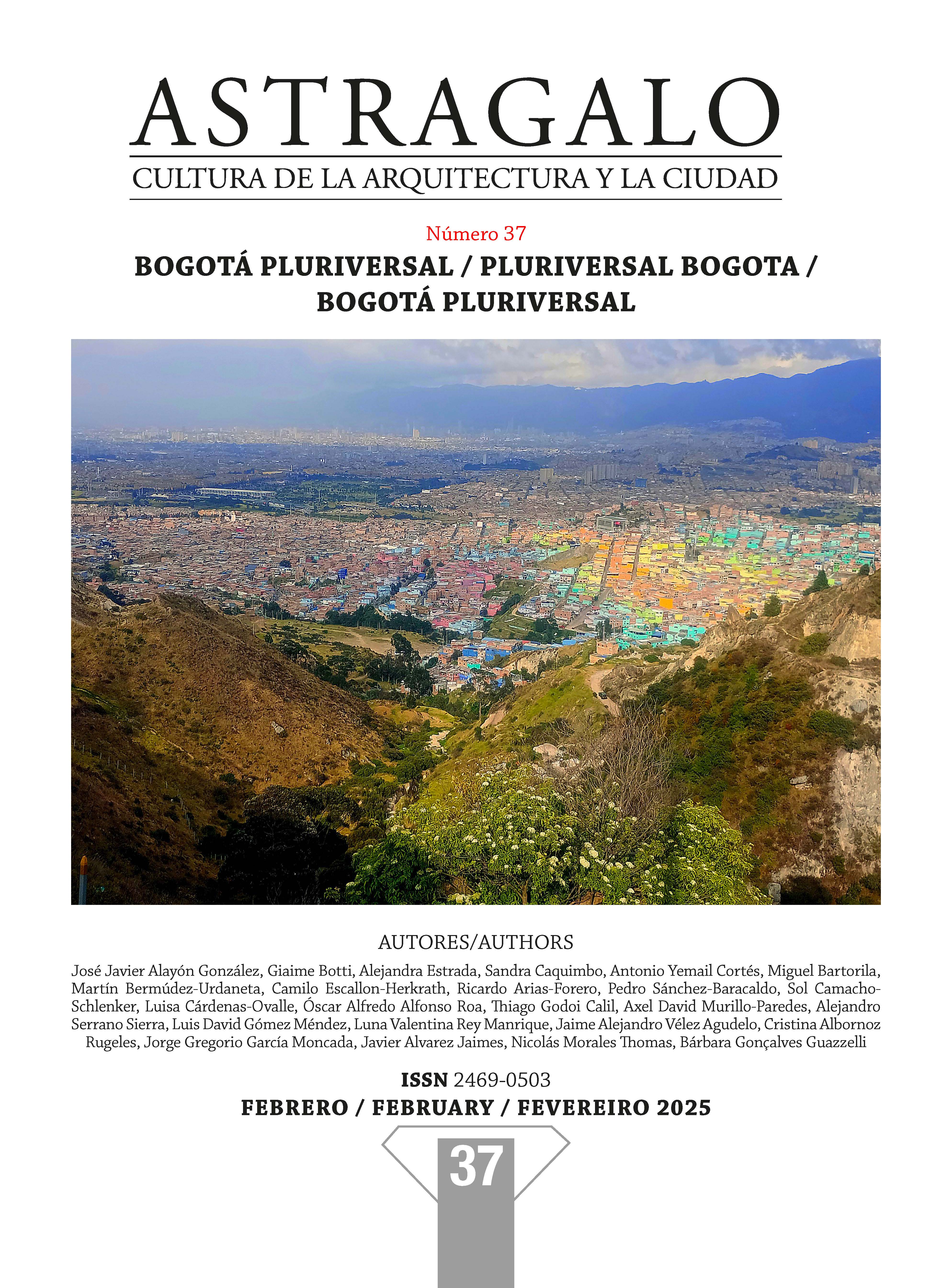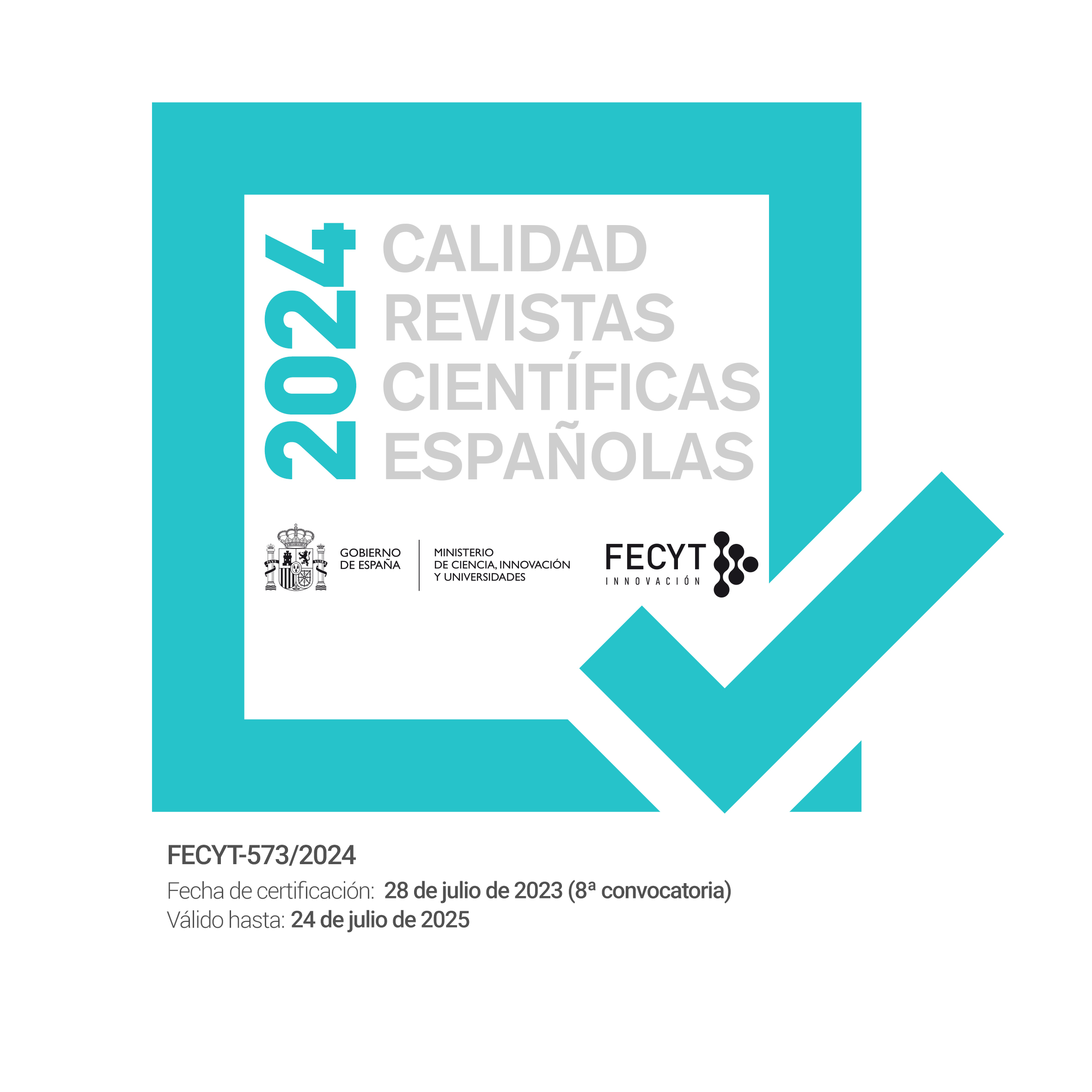Bogotá y sus otros mundos
DOI:
https://doi.org/10.12795/astragalo.2025.i37.01Palabras clave:
Ciudad pluriversal, conflictos sociales, diversidad urbana, estudios urbano, terraformarResumen
El número especial de Astrágalo sobre Bogotá se suma a ediciones previas dedicadas a otras ciudades como Sevilla y Delhi, abordando la riqueza cultural de urbes diversas. “Bogotá pluriversal” se alinea con debates sobre ciudades enfermas, divididas y con enfoques de género, aunque deja temas relevantes sin abordar, como las Manzanas del Cuidado o iniciativas educativas. La convocatoria se basó en las ideas de Arturo Escobar sobre el reequipamiento ontológico y la política pluriversal, así como en estudios sobre ciudades divididas de Roberto Fernández, explorando la segregación y el conflicto urbano. La visión de Bogotá como un centro latinoamericano implica repensar su relación con el territorio ancestral de Bacatá, equilibrando desarrollo y sostenibilidad. El concepto de ciudad pluriversal busca incluir múltiples realidades y modos de habitar, promoviendo la reconexión con el planeta a través de acciones como la relocalización productiva, la despatriarcalización y la descolonización. Esta edición ofrece una oportunidad para mostrar las dinámicas actuales de Bogotá frente al protagonismo mediático de Medellín, alejándose de la modernidad del siglo XX para analizar sus consecuencias y proponer alternativas ante los desafíos socioambientales. La ciudad enfrenta problemas de conurbación, crisis climática y tensiones migratorias, que requieren soluciones integradoras y diversas. Así, esta radiografía parcial de Bogotá expone realidades en transformación y la necesidad de seguir explorando su complejidad urbana desde perspectivas plurales.
Descargas
Citas
Escobar, A. 2022. Sobre el reequipamiento ontológico de las ciudades. Astrágalo. Cultura De La Arquitectura Y La Ciudad, 1(30), 45–58. https://doi.org/10.12795/astragalo.2022.i30.02
Fernández, R. 2022. Ciudades Divididas. Astrágalo. Cultura De La Arquitectura Y La Ciudad, 1(29 (EXTRA), 19–43. https://doi.org/10.12795/astragalo.2021.i29.01
Descargas
Publicado
Cómo citar
Número
Sección
Licencia
Derechos de autor 2025 José Javier Alayón González, Giaime Botti, Alejandra Estrada, Sandra Caquimbo

Esta obra está bajo una licencia internacional Creative Commons Atribución-NoComercial-CompartirIgual 4.0.


















